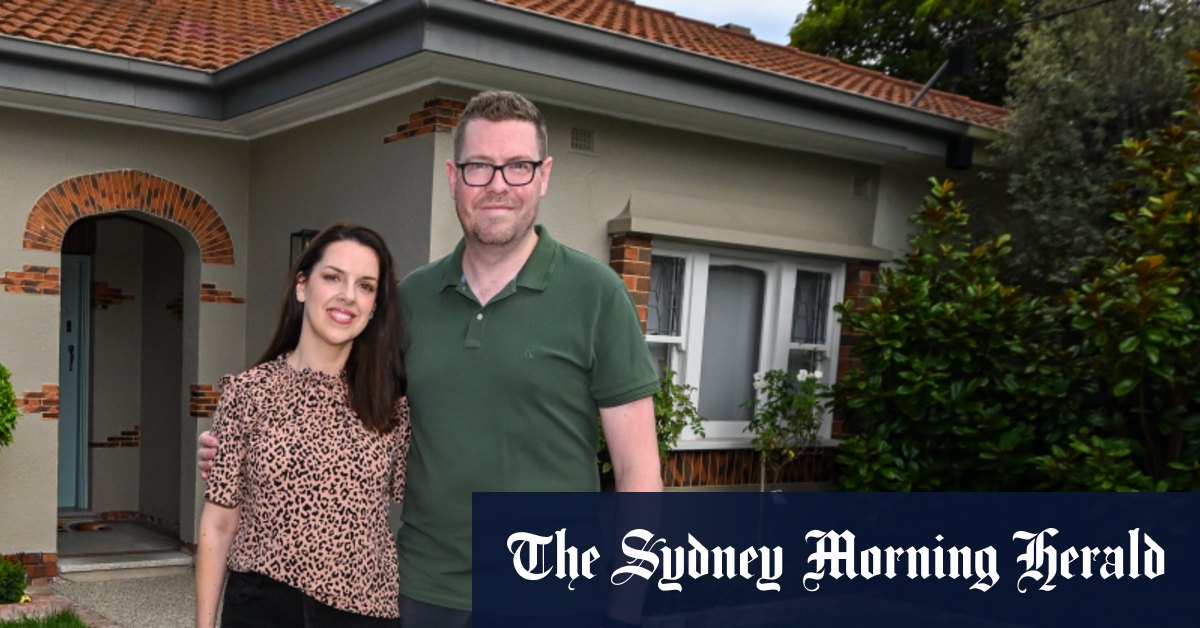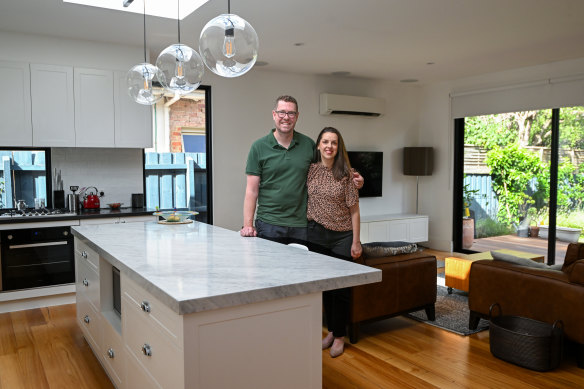
The Melbourne suburbs where property boom price growth has been erased
Melbourne house values have returned to pre-COVID levels or lower in many suburbs, as rising interest rates erase years of rapid price growth.
Median house values in 151 Melbourne suburbs have fallen to or below their March 2020 median since the market downturn began last year, new CoreLogic data shows.
CoreLogic research director Tim Lawless said Melbourne property prices had dropped 9.3 per cent from their peak last year, and were just 0.4 per cent above pre-COVID levels by the end of January, but some suburbs have seen sharper falls.
“It’s not surprising to see some suburbs have already come back to pre-COVID levels,” he said.
Melbourne’s inner-south had the greatest reduction in prices – St Kilda was 17.7 per cent below the March 2020 median, South Melbourne was down 16.7 per cent, and Windsor was down 16.2 per cent.
Their medians ranged from $1.5 million to $1.7 million, and Lawless said he expected prices falls to be concentrated in the inner, more expensive areas of Melbourne, as demand for such areas had reduced as residents left to find more space.
“The largest set of suburbs were located in inner Melbourne, which isn’t surprising because there was a preference shift away from density,” he said.

Simon and Erin Barber say prices coming back to pre-COVID levels made buying in his dream area more attainable.Credit:Joe Armao
That was followed by Melbourne’s outer east, where 30 suburbs had fallen to or below pre-COVID levels, Lawless said. While homes in such suburbs offered buyers more space, they were at the more premium end of the city fringe market – which had been the hardest hit by rising rates.
“It was the upper quartile of the market that was driving the larger declines,” he said.
The price falls are making it easer for some buyers, like Murrumbeena homeowner Simon Barber, to get into sought-after suburbs.
Barber recently bought a larger home in his dream suburb, despite previously writing off his chances.
“It did feel a bit out of reach at its peak. We’re both professionals on reasonably good wickets, so we did think there would be some opportunity [once prices started falling].

Barber says peak prices made Murrumbeena seem unattainable. Credit:Joe Armao
“It was more attainable than what it had been at its absolute peak.”
The median house price in Murrumbeena was $1,474,000, 4.9 per cent down on March 2020 prices and 15.8 per cent below its September 2021 price peak.
Loading
It was a huge relief to find a home in the suburb Barber’s family knows and loves – it meant his two sons could have their own space and stay in their schools.
“[The kids] can walk to shops, parks and schooling once their little legs are a bit bigger,” he said. “We were just really desperate to secure a bit more space because both my wife and I were working from home. The boys were sharing a room in our townhouse.”
Property services company Entourage Finance helped the Barbers with the sale of their old townhouse and the purchase of their new house. Director Antoinette Sagaria said low listing volumes and borrowing capacities still made buying a challenge.
“In certain portions of the market it has become very difficult to buy because they are typically tightly held,” she said. “And add on the hesitation of vendors, and you have very low stock levels to work with.
“There are still would-be vendors out there who want to sell, but that hesitation is real.”
Fewer suburbs had unit prices return to pre-pandemic levels, at just 98. The largest fall was in Kew East at 20.9 per cent, followed by Ascot Vale at 20.3 per cent and Balwyn North at 19.8 per cent.
NAB senior economist Gareth Spence was not surprised to see COVID-era gains completely erased in large sections of Melbourne.
Loading
“We’ve got [a] national forecast [for an] 18 per cent peak-to-trough decline, and we’ve seen about 9 per cent of that already on the CoreLogic numbers,” he said.
“What’s driving the forecast … is the reduction of borrowing power.”
Spence said the downward pressure on prices caused by interest rate rises – the steepest since 1994 – was outpacing any lift from other market forces.
However, he noted the strong labour market, rental market and population growth could help put a floor under prices.
Spence said while prices were coming back, affordability was not improving, as rising rates had reduced borrowing power more than property prices.
He expected affordability to further deteriorate as interest rates continue to climb, and has forecast rates to reach 4.1 per cent by at least May.
“That’s not game-changing in terms of the broader macroeconomy, but it does have an impact.”

























































